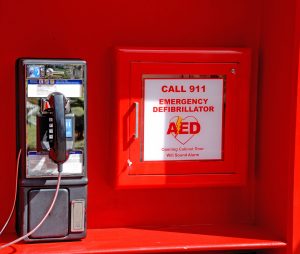Learn Lifesaving Skills in the Water
Swimming
The American Academy of Pediatrics (AAP) recommends that every family learn to swim. Swimming lessons have been shown to be beneficial for children as young as age one, but parents should consult with their pediatrician to determine when their child is ready.
Basic skills that should be learned in swim lessons are:
- entering the water
- surfacing
- turning around
- propelling oneself for at least 25 yards
- floating on or treading water
- exiting the water
Parents should monitor their child’s progress and continue swimming lessons at least until these basic skills are mastered. High quality swimming lessons will include additional potentially life-saving skills such as self-rescue, swimming in clothes and life jackets, and falling into the water. Parents and caregivers should work with swimming instructors to monitor their child’s progress in the water.
While they can contribute to water safety, swimming lessons do not erase the risks of swimming. Conditions such as water temperature, air temperature, weather, water depth, water movement, and situational and individual factors can affect an individual’s swimming ability. Caregivers should remember that floaties are not safety devices, and can often provide a false sense of safety to guardians and swimmers. When these toys are in use, the caregiver must still provide active supervision.
Parents and caregivers often overestimate their child’s swimming ability, especially when the child has had swimming lessons, but it is important not to neglect the other aspects of water safety. Swimming lessons should be used in conjunction with other water safety recommendations, such as four-sided fencing, safe drains, and active supervision, to provide multiple ways to reduce the risk of drowning.
For more information on safe swimming, see the AAP’s policy statement. Also visit www.aap.org/drowning.
To find swimming lessons in your area, check with your local YMCA, Red Cross, and other community organizations.
Cardiopulmonary Resuscitation (CPR)
If drowning has occurred and the victim is not breathing, bystander-initiated CPR is the most effective way to promote a positive outcome. CPR consists of rescue breathing, chest compressions, and use of an automatic external defibrillator (AED). An AED is a machine used during a heart attack to restart the heart. Adults and older children should learn CPR.

In drowning situations, rescuers should focus on rescue breathing, clearing the airway, and calling 911 before beginning compressions.
The Red Cross’s drowning chain of survival is as follows:
- Recognize the signs of someone in trouble and shout for help.
- Rescue and remove the person from the water, if it is possible to do so without putting yourself in danger.
- Point to one person and tell them to call 911. If alone, do two minutes of rescue breathing and CPR and then call 911.
- Begin rescue breathing, then CPR.
- Use an AED if available and transfer care to EMS.
Even if rescue breaths are the only intervention that is needed for the victim to regain consciousness, the rescuer should call 911 and the victim should be transported to a hospital for further evaluation.
To learn CPR, ask at your local rescue squad or fire station, YMCA, Red Cross, or other community organizations.
